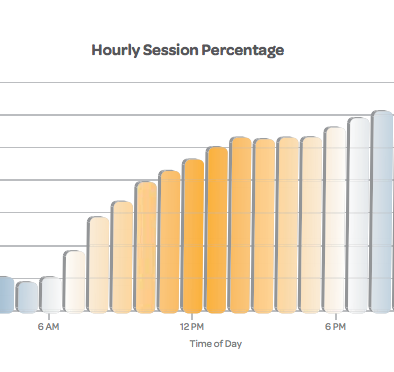Usage of health and fitness apps has grown exponentially since 2013. Looking at data from over 6,800 iPhone and iPad apps listed under the health and fitness category, Flurry Analytics reports a 62% increase in the usage of health and fitness apps over the past 6 months, while the overall mobile app industry has only seen a 33% increase. Such a statistic means that growth in health and fitness apps is 87% faster than the entire mobile app industry.
One factor that has sparked the growth of health and fitness apps is the fact that more fitness devices and wearable accessories are being sold to help track physical progress. Many of these accessories come compatible with mobile applications, which are then designed to be used on a daily basis.
Over the past two years, there have also been various innovative health and fitness apps integrated with major social networks. One example is MapMyFitness; a fitness app connected with Facebook, where friends can cheer each other on, share and like recent achievements, and challenge each other to fitness competitions. Such integration has inspired other fitness-based social networks including Fitocracy, Daily Mile, and Traineo.
Flurry also reports that much of the growth in the health and fitness category is a result of a new group of consumers called “Fitness Fanatics:” mobile consumers who spend more than three times the average amount of time using health and fitness apps. Fitness Fanatics are 62% females and 38% males, according to Flurry. Digging even deeper, Flurry concluded that Fitness Fanatics are mostly mothers ages 25-54, who are sports fans and live very active lives.
With the emergence of Fitness Fanatics, along with increasing interest in tracking physical health, health and fitness apps are expected to become the hot commodity of the wearable technology market. By 2017, around 30% of American consumers will wear a device to track sleep, food, exercise, and heart rate on a daily basis, according to Stephanie Tilenius of Kleiner Perkins Caufield & Byers.
Such expectations prove to be encouraging for Apple and Google, as they get set to release HealthKit and GoogleFit; new apps that link to wearable fitness technology. Since Fitness Fanatics are the ones most regularly using this technology, they are estimated to be the first to adopt these new apps, and the group Apple and Google will focus most of their attention on.
Apple has already begun marketing the various health and fitness apps that can be downloaded as a part of HealthKit and iOS8.
Is it time you begin tracking your health and fitness with your mobile device?


